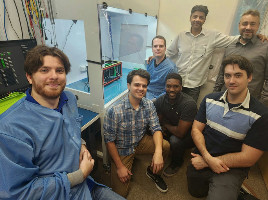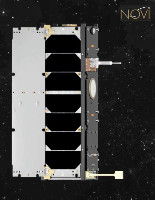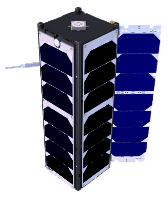| Spacecraft | LIME (Low-latency Intelligence and Monitoring Experiment, NOVI) |
|---|---|
| Form factor | CubeSat |
| Units or mass | 3U |
| Status | Operational (News on 2025-04-03) |
| Launched | 2025-01-14 |
| NORAD ID | 62648 |
| Deployer | Mercury [Maverick] |
| Launcher | Falcon 9 (Transporter-12) |
| Organisation | NOVI |
| Institution | Company |
| Entity | Commercial |
| Headquarters | US |
| Manufacturer | AIVT by Utah State University Space Dynamics Laboratory |
| Oneliner |
Characterizing the availability of Iridium short burst data links in orbit. |
| Description |
NOVI LLC focuses on combining AI with edge processing and integrated sensor solutions to deliver high-value low-latency intelligence. By combining edge processing and opportunistic communications in this mission, NOVI is demonstrating the foundation of future smart satellite buses. Such buses will enable users to pre-sort data onboard increasing the quality of downlinks and making automated decisions decreasing system response times across a variety of potential payloads. LIME – Low-latency Intelligence and Monitoring Experiment – is a 3U small satellite mission primarily dedicated to characterizing the availability of Iridium short burst data links in orbit. The satellite was designed by NOVI under a Small Business Innovation Research (SBIR) contract. Launch and in-space operations are covered by a follow-on sub-contract with The Space Dynamics Laboratory. The specific objectives of the mission are to:
By mapping the availability of Iridium SBD communications, LIME may improve the viability for future satellites to use the Iridium network in LEO as a form of opportunistic communications potentially replacing traditional ground stations, or as a method of communicating outside of ground station line-of-sight. Use of the Iridium SBD system to increase the portion of orbit in which a satellite can communicate with operators has the potential to drastically reduce the delay between data collection and reporting or fault indication and response. By running system health monitoring algorithms onboard, LIME will be capable of detecting and possibly predicting hardware and software anomalies automatically. This enhanced information can be used by operators to reduce response time and decrease overall system down time. Increasing the autonomy of satellites is essential as constellations grow and missions spread further from Earth. LIME is funded through a firm fixed price subcontract for NOVI LLC from the Utah State University Space Dynamics Laboratory (SDL). Prime funding is from the Air Force Research laboratory under contract number FA9453-22-D-0005. |
| Sources | [1] [2] |
| Photo sources | [1] [2] [3] |
| Keywords | Globalstar or Iridium or Inmarsat |
| On the same launch |
|
Last modified: 2025-04-20



